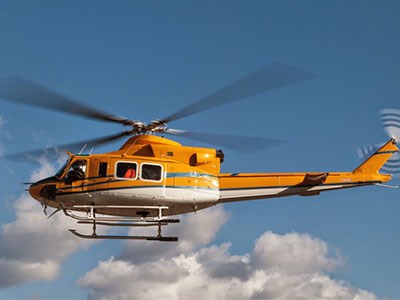Neskantaga First Nation has written a hotly worded letter to Premier Doug Ford to “formally express our deep concerns” about five “low-flying” helicopters working on the access road to Webequie First Nation as part of the Ring of Fire mining development — which Neskantaga steadfastly and vocally opposes.
In his letter to Ford, Neskantaga Chief Chris Moonias said the helicopters were inside his community’s territory on Oct. 4 without its consent, violating Neskantaga’s treaty rights by disrupting the annual fall hunt.
“Under Treaty No. 9, our people have the right to hunt, trap, fish, and gather on these lands. The recent disturbances have directly affected our hunt, particularly by startling and deterring moose during the critical fall harvest period,” said Moonias.
“In one instance, hunters were waiting for a moose when a helicopter landed on the other side of the lake scaring the moose away. This is a very important harvesting time for our people, and any chance to harvest a moose is a rare opportunity that does not come easily.”
Moonias argued the helicopters are a “prime example” of how the Ring of Fire and access road projects “adversely impact our treaty rights and way of life,” despite assurances they will be “low-impact.”
The letter also notes that Neskantaga has “repeatedly” raised objections to such activities related to access road construction, including geotechnical drilling that took place in August. At the time, the community sent another letter to the province, but “the Crown continues to issue permits regardless.”
The First Nation is calling on the provincial government to “cease all activities” related to the access road projects “until the end of the fall hunt.” Licensed hunting of moose and deer comes to an end in late November.
Neskantaga is also demanding a “full review of the activities that have taken place without our consent and with adverse impacts on our rights,” as well as an“urgent meeting with provincial leadership” to create a plan that protects their “lands, rights and culture” going forward.
But the company Neskantaga accuses of operating the helicopters, Wisk Air, denies they are responsible for the hunt disturbances on Oct. 4.
In an email to The Trillium, operations manager Mark Wiskmann said Wisk has 40 years of experience working in northwestern Ontario, is “very sensitive to First Nations traditional and seasonal needs,” and always “attempts to mitigate any complaints” about their flights.
Wiskmann acknowledged that the company received a complaint about the “supposed landing” at Eyes Lake that Moonias mentioned, which took place prior to Oct. 4.
After that complaint, Wisk consulted with its customer, Atkins Realis, and changed its flight paths to give the First Nation a wide berth while shuttling between the Webequie access roads work sites.
As such, Wiskmann insists his helicopters were nowhere near Neskantaga on Oct. 4, which he notes is backed up by the satellite tracking data.
“[I] did instruct our pilots to avoid Neskantaga and conduct all transit flights, both to and from the work area at 3,000 feet when possible and then subsequently moved the route from the Direct route to a more circuitous route to the West,” said Wiskmann.
“At no time since the instruction I gave did a Wisk air helicopter overfly the area within 30 kilometres of Neskantaga.”
Wiskmann suggests that perhaps Moonias is mistaken and that helicopters actually responsible for the disturbances on Oct. 4 are from other companies that paint their machines a similar colour.
The premier’s office did not respond to questions about the helicopter incident and Neskantaga’s demands.



